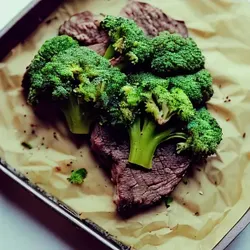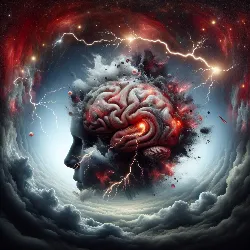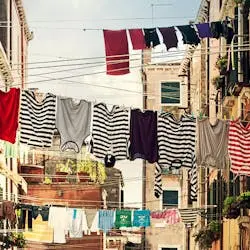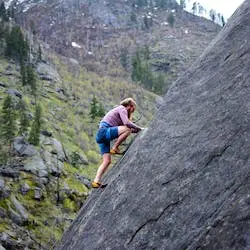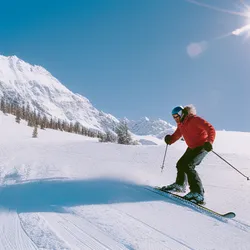
Level 1:
No snow this year? There can be many reasons. Climate change is a big reason. It makes things hotter so there is less snow. Another reason is weather patterns. They can change and stop snow from falling. So, no snow might be because of climate change and weather patterns.
Level 2:
Are you puzzled why there’s no snow this year? Several factors can impact the presence of snowfall in a given year, one of the most significant being climate change. Global warming tends to increase temperatures, which can reduce snowfall. Another crucial reason is shifting weather patterns. Changes in atmospheric conditions can disrupt the regularity of snowfall. Hence, if you’re witnessing a year without snow, it could be attributed to climate change and alterations in weather patterns.
Full Story:
Why is there no snow this year? It’s a question that’s been on everyone’s lips lately. The absence of our favorite winter phenomenon can dampen the festive spirit and create a bleak seasonal scenario. But it can also be a sign of bigger issues.
Firstly, let’s get to grips with one of the main culprits: climate change. As average global temperatures continue to inch upwards, the patterns of snowfall are changing. Climate change, driven largely by human activities, fuels the fire of global warming, leading to increased temperatures. This, in turn, reduces the likelihood of snowfall, especially in regions that typically experience milder winters.
But the story doesn’t end there. Another significant reason for our snow-less year revolves around “weather patterns.” These short-term atmospheric conditions can play a major role in determining whether a region gets covered in a blanket of snow or remains bare. Factors such as winds, air pressure, and temperature variations can call the shots on whether Mother Nature bestows upon us a snowy landscape or a snow-less one.
For instance, consider the ‘El Nino’ phenomenon, which throws a spanner in the works of normal weather patterns with warmer-than-usual sea surface temperatures in the tropical Pacific. An El Nino year could mean lesser snow for some regions. Similarly, the Arctic Oscillation can either bottle up cold, snowy weather in the Arctic regions or let it loose over North America and Europe, depending on whether it’s in a positive or negative phase.
Let’s face it, the relationship between weather and snowfall isn’t straightforward - it’s a complex puzzle where every element plays a part. Everything, from global temperature trends right down to local air pressure variations, can tip the scales in favor of or against snowfall.
So, rather than write off the lack of snow as a fluke, it’s important for us to read up on these scientific phenomena and connect the dots. The overall picture isn’t just about missing out on snowball fights or skiing sessions. A snow-less winter could be the tip of the iceberg, hinting at significant changes in our climate system that require our attention.
Understanding why we’re missing out on snowfall this year can better equip us to take a stand against climate change and protect our planet for future generations. And perhaps, we can hope for a snowy winter next year.
Questions:
Question: Why is there no snow this year?
Answer: Reasons for no snowfall could include climate change leading to global warming and changes in weather patterns.
Question: How does climate change impact snowfall?
Answer: Climate change leads to increased global temperatures, reducing the likelihood of snowfall, especially in regions with milder winters.
Question: What role do weather patterns play in snowfall?
Answer: Weather patterns, affected by factors like winds, air pressure, and temperature variations can determine the occurrence of snowfall in a region.
Question: What is the El Nino phenomenon and how does it affect snowfall?
Answer: The El Nino phenomenon leads to warmer-than-usual sea surface temperatures in the tropical Pacific, which can disrupt normal weather patterns and possibly reduce snow in some regions.
Question: How can understanding snowfall patterns help in climate change efforts?
Answer: Understanding snowfall patterns can help us notice significant changes in our climate system that require attention, thereby equipping us to take measures against climate change.
Fill in the Blanks:
on everyone’s lips, get to grips, inch upwards, fuels the fire, end there, call the shots, bestows upon us, throws a spanner in the works, bottle up, let it loose, Let’s face it, plays a part, tip the scales, write off, read up on, the tip of the iceberg, take a stand
”Why is there no snow this year?” It’s a question that’s been _____ lately.
Firstly, let’s _____ with one of the main culprits: climate change.
As average global temperatures continue to _____, the patterns of snowfall are changing.
Climate change, driven largely by human activities, _____ of global warming.
But the story doesn’t ____.
Factors such as winds, air pressure, and temperature variations can _____ whether Mother Nature _____ a snowy landscape or a snow-less one.
The ‘El Nino’ phenomenon, which _____ of normal weather patterns.
The Arctic Oscillation can either _____ cold, snowy weather in the Arctic regions or _____ over North America and Europe.
_____ , the relationship between weather and snowfall isn’t straightforward - it’s a complex puzzle where every element _____.
Everything, from global temperature trends right down to local air pressure variations, can _____ in favor of or against snowfall.
So, rather than _____ the lack of snow as a fluke, it’s important for us to _____ these scientific phenomena and connect the dots.
A snow-less winter could be _____, hinting at significant changes in our climate system.
Understanding why we’re missing out on snowfall this year can better equip us to _____ against climate change.
Difficult Words:
on everyone’s lips - (phrase) if something is on everyone’s lips, people are talking and thinking about it a lot.
get to grips (with something) - (phrase) to make an effort to understand and deal with a problem or situation.
inch upwards - (phrase) to increase or rise slowly and by a small amount.
fuels the fire - (phrase) to make an existing problem worse; the act of making a situation much worse.
end there - (phrase) to refer to the completion or conclusion of something.
call the shots - (phrase) to make the decisions; be in charge.
bestows upon us - (phrase) given or presented to us.
throws a spanner in the works - (phrase) to do something that prevents a plan or activity from succeeding.
bottle up - (phrase) to keep emotions hidden.
let it loose - (phrase) to allow it to be free.
Let’s face it - (phrase) used when you are saying something that is true but not pleasant or convenient.
plays a part - (phrase) to be involved and influential in achieving a result.
tip the scales - (phrase) to alter the balance of a situation, often by providing an advantage.
write off - (phrase) to decide that something or someone will not succeed or improve and stop giving them your attention.
read up on - (phrase) to read a lot about a subject to learn about it.
the tip of the iceberg - (phrase) a small, noticeable part of a problem.
take a stand - (phrase) to express a strong opinion that something is wrong and should be changed.
